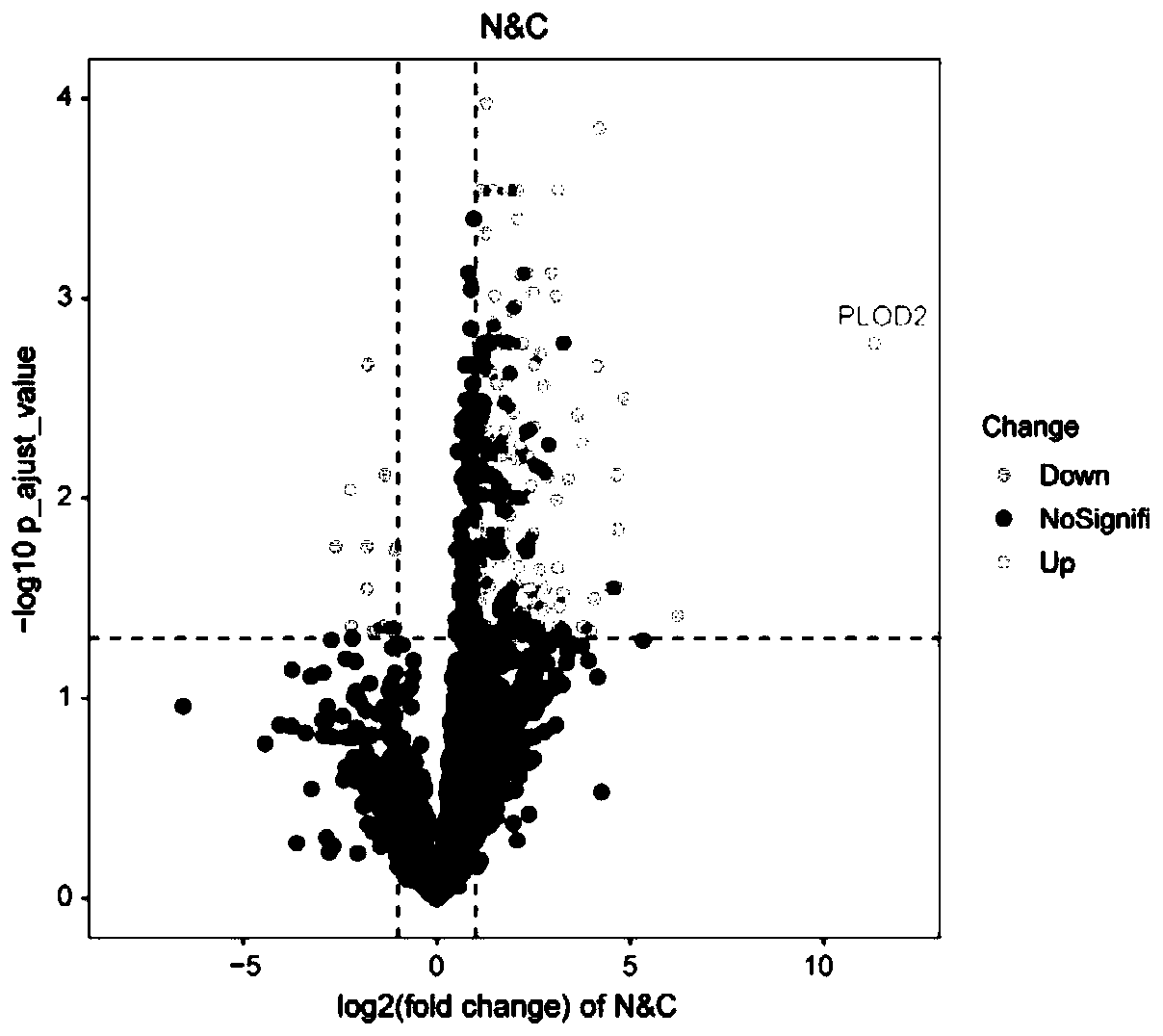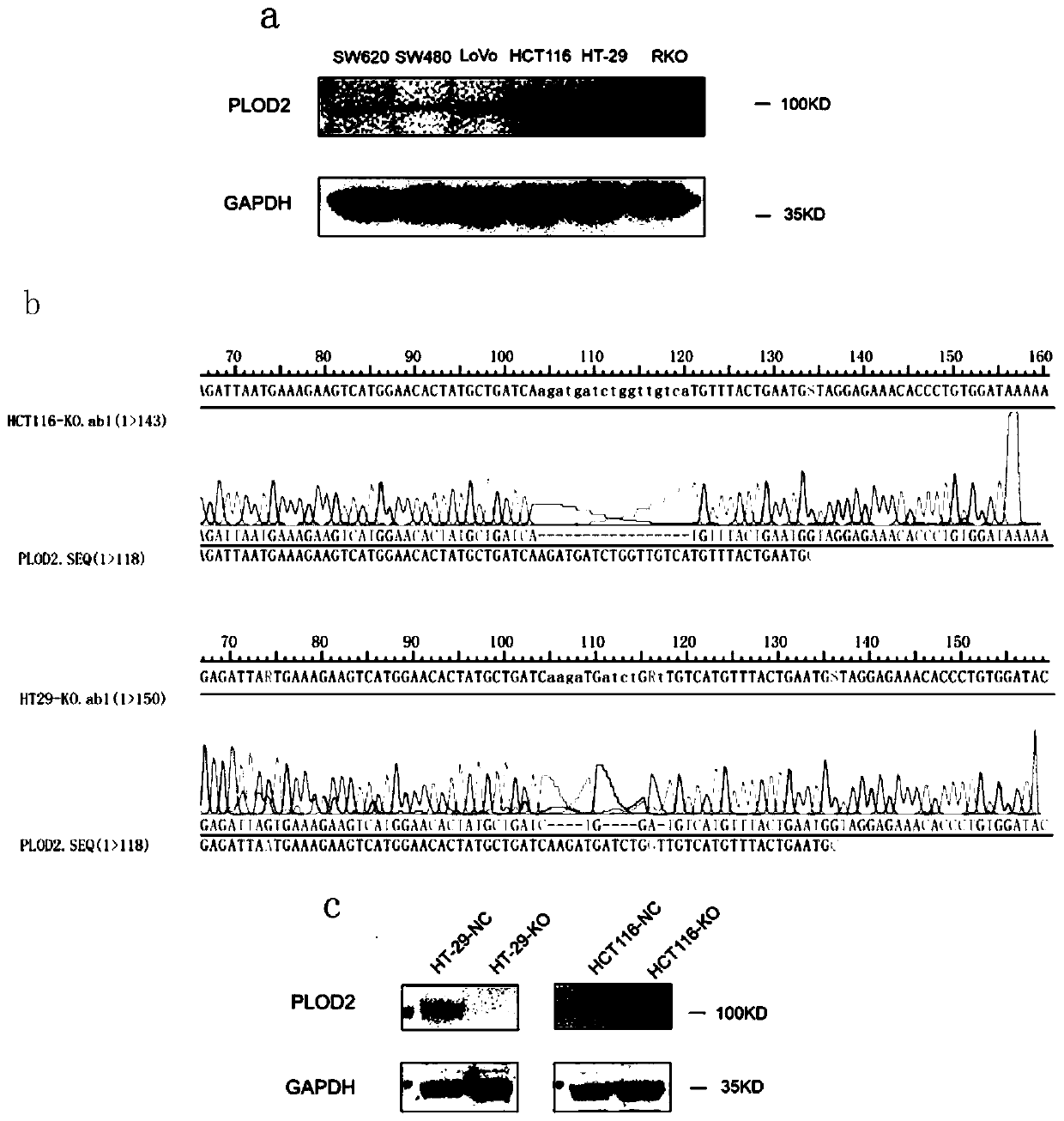Application of small-molecule inhibitor minoxidil of PLOD2 in tumor treatment
A dose of minoxidil, a technology for tumor treatment, and the application field in the preparation of tumor treatment drugs
- Summary
- Abstract
- Description
- Claims
- Application Information
AI Technical Summary
Problems solved by technology
Method used
Image
Examples
Embodiment 1
[0021] Example 1 Proteomic differences between normal colorectal tissue and colorectal cancer tissue
[0022] 1. Sample collection
[0023] Paraffin-embedded tissue specimens (FFPE) from 20 normal colorectal tissues and 30 colorectal cancer tissues were collected and approved by the Institutional Ethics Committee of the Second Affiliated Hospital of Zhejiang University School of Medicine (Zhejiang Province, China) (SYXK2018-0012) .
[0024] 2. Sample preparation and detection
[0025] Two biological replicates were taken from 50 cases of FFPE specimens. FFPE tissues were dewaxed and decrosslinked, followed by tissue lysis using a cyclic pressure-based technique (PCT). After reduction and alkylation, the sample protein was digested sequentially with lysC enzyme and trypsin (Hualishi Scientific, China) in a Barocycler (Pressure BioSciences. Inc, USA). Use Sep-Pak Vac 1cc (50mg) C18 column (Waters, MA, USA) to desalt and dry the acidified peptide to obtain purified peptide, r...
Embodiment 2
[0029] Example 2 Verification of PLOD2 expression in colorectal cancer and normal tissues
[0030] 1. Verification of PLOD2 expression by Western blotting (WB)
[0031] Four pairs of fresh tissue samples (colorectal cancer and its negative margin tissue) were used to obtain protein. 40ug protein samples were separated by electrophoresis and separated by gel electrophoresis using a 10% SDS-polyacrylamide gel, and transferred to a polyvinylidene fluoride membrane (Bio-Rad), followed by a mouse anti-PLOD2 antibody (1 :2000, Invitrogen, MA5-26585) and mouse anti-GAPDH antibody (1:2000, Invitrogen, MA5-15738) for detection.
[0032] 2. Validation of PLOD2 expression using tissue chips
[0033] The tissue microarray (TMA) consisted of 79 normal colon and 119 colorectal cancer tissue samples. Tissue samples were used in accordance with national and institutional codes of ethics. TMA was stained using an antibody against PLOD2 (mouse monoclonal antibody, 1:150, MA5-26585, Invitrog...
Embodiment 3
[0035] Example 3 Construction of PLOD2 Knockout Colorectal Cancer Cell Lines
[0036] 1. Selection of cell lines
[0037] Human CRC cell lines SW620 (CCL-227, LOT: 61886714) and SW480 (CCL-228, LOT: 63424079) were purchased from American Type Culture Collection (ATCC). HCT116, HT-29, LoVo and RKO were obtained from the Cell Bank of the Chinese Academy of Sciences (Shanghai, China). And all cell lines were identified by short tandem repeat markers. The above cell lines were cultured in ATCC's recommended appropriate medium containing 10% fetal bovine serum (Gibco), supplemented with 100 IU / ml sodium penicillin and 100 mg / ml streptomycin in the recommended ATCC. Extract cellular protein, detect PLOD2 expression with the above-mentioned method with Western Blot (such as image 3 Middle a).
[0038] 2. Construction of PLOD2 knockout colorectal cancer cell lines HCT116 and HT-29 CRISPR-Cas9 system (Invitrogen, Cat: A36496), a stable ribonucleoprotein (RNP) transduction complex, i...
PUM
 Login to View More
Login to View More Abstract
Description
Claims
Application Information
 Login to View More
Login to View More - R&D
- Intellectual Property
- Life Sciences
- Materials
- Tech Scout
- Unparalleled Data Quality
- Higher Quality Content
- 60% Fewer Hallucinations
Browse by: Latest US Patents, China's latest patents, Technical Efficacy Thesaurus, Application Domain, Technology Topic, Popular Technical Reports.
© 2025 PatSnap. All rights reserved.Legal|Privacy policy|Modern Slavery Act Transparency Statement|Sitemap|About US| Contact US: help@patsnap.com



